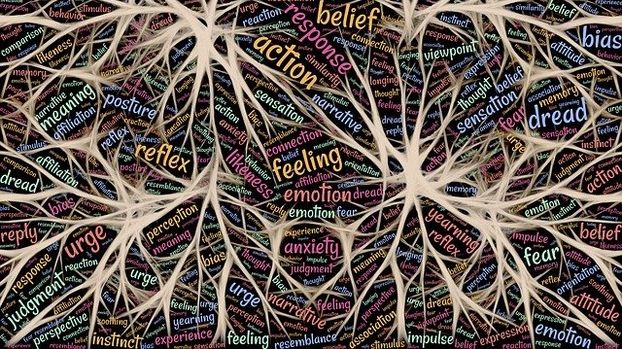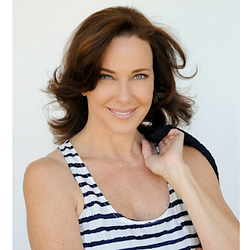
Blog post -
The Yoga of Mindset: Take a Break
Article by Paulette Bodeman
The past several months presented us with new levels of challenge. Most of us fluctuated between riding the waves of fear and anxiety and embracing the enforced slower pace of life. While it may seem that you are controlled by life’s circumstances, the truth is: you are not. It’s actually your mind and your current life’s situation that control you.
As we look to the future, it’s important to adopt strategies like what I call, “The Yoga of Mindset.” It utilizes a method I invented based on the acronym, BREAK: Belief, Rumination, Emotion, Authorship, Kinesthesiology. Here’s an example of how this method applies to the emotion of grief and how it can be addressed:
Belief: I find holidays depressing since mom died.
Rumination: I miss mom; how will I make it through these days without her?
Emotion: I in an experience grief.
Authorship: I give myself permission to feel sad.
Kinesiology: I’ll take action on my grief and drive to the cemetery, take a meditative walk there, and cry.
Where’s the BREAKAWAY point in this example? The holidays aren’t depressing in themselves. It was the thoughts about the holidays that evoked the emotions, not the holiday itself.
This strategy can be applied to any emotion or situation. Here are the truths that are embedded in BREAK:
Belief
It’s helpful to understand where your beliefs originate. Your initial beliefs are formulated from and influenced by your parents, teachers/mentors, culture, socio-economics, and religion. These learned beliefs shape what you believe about people, the world, and your place in it.
Beliefs drive behaviors. Just like the negative and limiting thoughts you hold, certain beliefs are obstacles to personal growth. Beliefs shape your thoughts—the ruminations that occur when situations and feelings arise: good, bad, neutral, inspiring, or problematic.
Rumination
Your thoughts, combined with your feelings, take you down a rabbit hole of rumination. For example, follow this belief: “People aren’t nice. In fact, people are rude to me. That sales lady was so disrespectful. She must think I’m not worthy of respect. Who does she think she is? I’m a good person.” You’ve reached the bottom when these thoughts and feelings arrive: “Wait. Am I a good person? Why am I not a good person? Oh no. I might not be a good person, and, I’ll never get out of here. But maybe I am a good person. How can I use the good in me right now? "You alone are responsible for falling down the rumination rabbit hole. And, you alone are responsible for getting yourself out of the rumination rabbit hole. But how?
Emotion
When thoughts swirl and fall, irritation and frustration enter the picture, emotion is your tool. Staying with the example of disrespect, let’s keep going: “I’m a caring person. She’s made me angry. I’m going to ask for her supervisor’s name and report that clerk.”
Emotion propels you to act on your anger. Just remember, that negative emotion is now lodged somewhere in your psyche and your body! What should happen next? You need to write an ending for the story; you need to take authorship.
Authorship
You always have the choice to break out of a negative thought/feeling spiral, and you do this by taking actions. Most people do not like to feel angry. They avoid negative feelings and label anything uncomfortable as bad and take action by numbing, bypassing, and pretending all is well. But...these actions do not allow you to leave the spiral.
Instead, feel the anger, or the sadness, and lean into the discomfort. Let the emotions arise and acknowledge them. Realize that you may have been taught life was supposed to be discomfort-free. But it’s not. So, ask, “What’s the worst that can happen?” and when you do, avoid giving yourself an answer right away.
In Tantric yoga, there’s the teaching of rasas. They are the textures and flavors that inform and enrich your experience. Rasas are the essence of your emotions that exist in the body, mind and spirit. There are nine main rasas: love, joy, wonder, calmness, anger, courage, sadness, fear, and disgust. In knowing the rasas, you understand that both positive and negative emotions are part of the human experience. There is no exception and no way around the fact that we live in a world of opposites, and everything that exists between them.
By living through months of quarantine necessitated by the pandemic, many people now accept that life offers the full spectrum of emotions, and just like the ingredients in a savory soup, life needs all the flavors. The flavors make the story, and the story wants to be processed.
When you take authorship, you move emotion through your body (like soup!) and bring it to a natural conclusion; one that doesn’t stick inside, linger, and cause more issues for you at a later date.
Kinesiology
Kinesiology is the science of movement. Find a movement practice that works for you. Perhaps your practice will be a combination of activities that change with time and circumstance. If yoga isn’t your thing, go for a walk. Take a hike. Lift your arms overhead with a deep intake of breath. Get a massage. Dance. Garden. Do whatever it takes to consciously move and allow the release of your negative and limiting beliefs, thoughts, and emotions.
By becoming an astute observer of your beliefs, thoughts, and emotions, you’ll know to take the appropriate actions that serve you, so you can process what needs to be done about any situation.
Paulette Bodeman, known as the Breakaway Girl, gives more detail on this important strategy at http://paulettebodeman.com/fre... where you’ll find The BREAKAWAY GIRL™ Rubric, a self-teaching tool.

